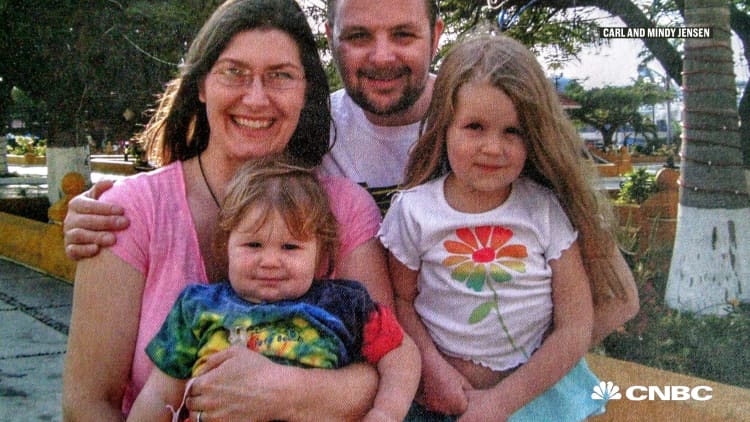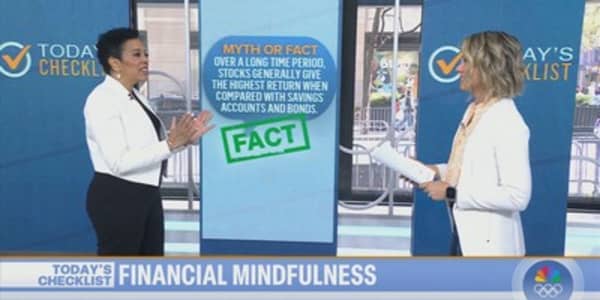
The most common shortcut people use to figure out how much to save for retirement is the 4 percent rule.
Under this rubric, you withdraw 4 percent per year from a diversified portfolio of stocks and bonds, adjust annually for inflation, and you will have enough to last in retirement based on historical returns of the U.S. stock market.
Many early retirees — people in their 30s, 40s and 50s who aim to save at least half their take-home pay so they can pursue their dream lifestyles sooner rather than later – use the 4 percent rule to figure out how large their nest egg should be.
Peter Adeney, the popular early retirement blogger known as Mr. Money Mustache, called the 4 percent rule "a shiny, bulletproof limousine of a retirement plan and you can ride it all the way to the party at Mr. Money Mustache's house."
Where the 4 percent rule can go wrong
The problem is that the 4 percent rule was developed in the 1990s when interest rates were significantly higher and the typical retirement lasted three decades or less.
"The 4 percent rule was designed for a 30-year time horizon. The longer your retirement, the lower your withdrawal rate should be," said Wade Pfau, a professor of retirement income at the American College of Financial Services.
For example, if you were planning a 40-year retirement, a 3.5 percent withdrawal rate would be more suitable, Pfau said.
His research found that portfolio losses in the early years of retirement would make use of the rule unsafe for many retirees. That's especially problematic for those who plan to be retired for a half century or more.

Brad McCarthy, an electrical engineer in Tucson, Arizona, who retired at 46, said early retirees might need to accept a lower withdrawal rate than 4 percent and have a larger portion of their portfolio invested in stocks than the average retired person to improve their odds of success.
Based his calculations, using historical investment returns and a 100,000 simulations, early retirees with at least 80 percent of their portfolios invested stocks and a starting withdrawal rate of 2 percent would have an 85 percent chance of success over a 50-year retirement.
More from Your Money Your Future:
Why everyone needs to check their paycheck
When you need life insurance in your 20s and 30s
How to know when downsizing your home in retirement makes sense
"You need to be conservative with withdrawals because you can't count on other sources of income, like Social Security, that most retirees have," said McCarthy, who is now 48.
So how much does McCarthy take out of his seven-figure portfolio each year? Nothing right now because his wife is still about five years from retirement and they're living off her salary, he said.
In the meantime, McCarthy is writing about investing and developing mobile apps. His first is an iPhone app called Cu Parachute (Cu is the symbol for Copper on the periodic table) to determine how much retirees should save. He based it on his work trying to figure out how large his own nest egg should be.
What works better than the 4 percent rule
Sam Dogen, creator of the personal finance website Financial Samurai, retired in 2012 at age 34 after a 13-year career in finance. He doesn't use the 4 percent rule because "it's too aggressive."
For him, a safer alternative is using the 10-year Treasury bond yield, which is currently at 2.4 percent. He said the yield is a good proxy for the risk-free rate of return, which is the theoretical rate of return from a risk-free investment, so it is a low-bar for his retirement portfolio to clear.
If you want to get more granular with your retirement calculations, you can use more detailed measures than the 10-year Treasury's yield. BlackRock, the world's largest asset manager, has cost of retirement income indexes that track how much you will pay to purchase $1 of income when you plan to retire. Pfau has developed his own retirement savings benchmarks based on inflation and market conditions.
Dogen said he has not dipped into his retirement savings because he lives off a passive income stream of certificates of deposits, stock dividends and real estate investments that he expects will generate roughly $211,000 this year.
No matter how much early retirees take out of their accounts, they have one asset older retirees lack: time. Early retirees can go back to work if necessary.
"The advantage to being an early retiree is that you can earn 'gravy money' if you want to by doing work you care about," said Dogen, who is currently an assistant coach for a San Francisco high school boys tennis team.






